Profile
Melissa Wilson Sayres
Wow! Thank you everyone so much! It was great to get to interact with the students and to get to know the other great Helium Zone scientists.
Work History
-
Education:
Syracuse High School (Syracuse, Nebraska); Creighton University (Omaha, Nebraska); Penn State University (State College, Pennsylvania); University of California, Berkeley (Berkeley, California); Arizona State University (Tempe, Arizona)
-
Qualifications:
B.S. Medical Mathematics; Ph.D. Integrative Biosciences (Bioinformatics & Genomics); Miller postdoctoral Fellow in Statistics and Integrative Biology; Assistant Professor at Arizona State University
-
Work History:
Waitress; Stocker/Cashier; Childcare provider; Nurse aide; Graduate student; Postdoctoral researcher
-
Current Job:
Assistant Professor of Genomics, Evolution, and Bioinformatics. I teach undergraduate and graduate students, and do research.
-
Employer:
Arizona State University
-
My Work:
I use computers to understand sex chromosome evolution in humans and other species.
-
Read more
One of the things I do is try to understand how much genetic diversity there is in the population (basically, how related the population is). One of the tools we use to do that is called the coalescent. To understand what the coalescent is, I made this video about finding the most recent common ancestor of our mitochondrial DNA:
https://www.youtube.com/watch?v=AL7dX5E3GuU
Turns out each part of our DNA has a most recent common ancestor, but each of those pieces occurred in a different individual. To picture that, let’s think about your family. You have two copies of each chromosome in your genome. One copy came from your genetic mom, and one copy came from your genetic dad. So, already, you are made from the DNA of two people. But, your genetic mom had two copies of each chromosome, one from each of her parents (your grandparents), and, each each pair of chromosomes swapped DNA in her, making sure that each chromosome in your mom is now a mixture of the DNA from each of her parents. The same is true of your dad’s chromosomes being a mix of DNA from his parents. If you think about it, your chromosomes are a mix of DNA from your parents, whose chromosomes are mixed-up DNA from their parents, and their parents, and so on. So each tiny piece of your DNA can be traced back to one person (like we did with the mtDNA in the video), but those pieces are traced back to different individuals.
-
My Typical Day:
I do research (writing programs to simulate and analyze DNA), write grants, teach, at do science outreach.
-
Read more
Sometimes I also extract DNA. If you’d like to see how you can extract DNA using common household products check out this video we made: https://www.youtube.com/watch?v=pdDP9OcqcbA&feature=youtu.be
-
What I'd do with the prize money:
Purchase 3-D models of some of the species we work with for outreach events.
-
My Interview
-
How would you describe yourself in 3 words?
scientist, parent, friend
What's the best thing you've done in your career?
I love the research I do, and I’ve gotten to learn new things about sex chromosomes, and mutation rate differences between males and females (http://www.wilsonsayreslab.org/research/), but the best thing I think I’ve done is to interactively communicate my science to the public (and especially appreciate twitter for those conversations: @mwilsonsayres).
What or who inspired you to follow your career?
I’ve always been a scientist. It may be fairer to ask who did I ignore so I could continue on this path. (Honestly, one of my biggest hurdles has been over-coming self-doubt.)
What was your favorite subject at school?
Algebra (I never took computer programming, but now I do it every day!)
What did you want to be after you left school?
A pediatric oncologist, or a teacher. I do get to teach now, and I’m involved in two research projects studying cancer, so I kind of did what I thought I wanted to do, but not in the ways I expected.
Were you ever in trouble at school?
I ditched class in 5th grade once. Long story, but happy to share.
If you weren't doing this job, what would you choose instead?
An artist.
Who is your favorite singer or band?
I skip around stations depending on my mood: blues, pop, oldies, folk, 80’s hair bands… but I’m always down for singing along to Queen.
What's your favorite food?
Chips and salsa.
What is the most fun thing you've done?
Gone swimming at night with bioluminescent dinoflaggelates that lit up the water.
If you had 3 wishes for yourself what would they be? - be honest!
1) To be able to do all of the things (as a teacher, as a parent, as a friend, as a scientist) and have the time to appreciate them; 2) To be fluent in every language (cultural and programming); and 3) To cure cancer without other terrible consequences (these wish things always have terrible unforeseen consequences, so I’d rather just work with the life I have).
Tell us a joke.
Why can’t you hear a Pteranodon go to the bathroom? Because the “P” is silent! (Ha!)
-

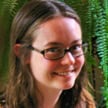
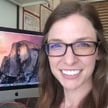
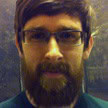
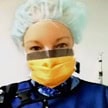
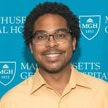
My Comments
Why do you find blood clotting so interesting and is there a story behind why? (1 comments)
Have you harmed gila monsters at all in your work? (1 comments)
Is it true that different animals have different colored blood? Ex.(spiders = blue blood) (1 comments)
How could artists help with communicating the scientific concepts to the public? (1 comments)
why would you want to be an artist if you were not a scientist ? (1 comments)